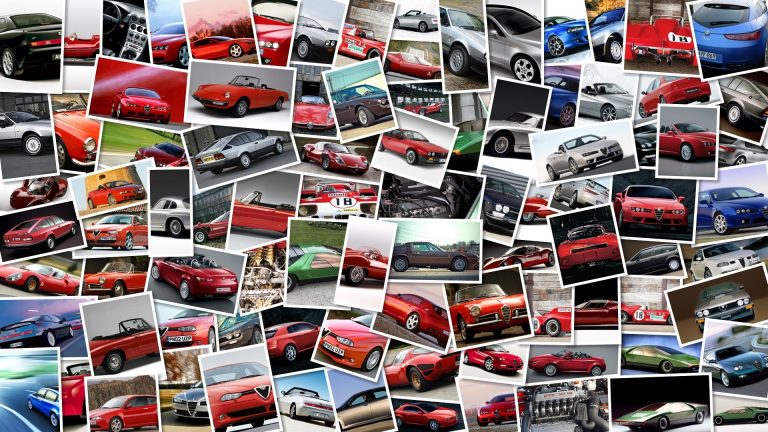
The 2010 YZ250F appears in this full gallery and video to give you a look at the new bike.
The chassis has been completely redesigned, now featuring a bilateral beam frame and new riding position.
The aim has been to get the rider further to the front of the bike, for better cornering and overall handling.
There have been a few engine changes too, including a new valve train, carburettor and exhaust all making for a more powerful and lighter bike.
Check out all the images and specs below, with some of the main features highlighted.
Yamaha YZ250F 2010 Ask any motocross rider where races are won and lost and odds on he’ll tell you its all in the corners.
A light, nimble and supreme handling MX bike can pick its lines and stick to them,enabling its rider to hang on longer and go harder.
So it’s no surprise to learn that cornering performance was the guiding theme throughout the development of the new model YZ250F.
The next generation motocross development plan was hatched with rider involvement paramount.
Trackside customer research led Yamaha engineers to discover that what riders wanted more than anything else was sharp handling.
Riders of all abilities from pros right down to swappers.
And by handling, they meant better cornering performance.
Because a better handling bike lets a rider get on the gas sooner, is less tiring to ride and is the key to winning motocross races.
The development team’s goal was to make quick cornering easy for riders of all skill levels.
Not a simple task and certainly not something that could be achieved with small tweaks to the chassis or engine.
The goal could only be reached by applying a highly innovative and synergistic approach to the science of motorcycle cornering.
The engineers were well aware that the 250 is not just a smaller displacement version of the 450, but a unique machine in its own right.
So the task was to design a stand alone 250, not a scaled down 450cc MX bike.
By making a specific 250cc machine, the chassis can be tailored to deliver the handling response suitable for the class.
The engine character of the 250 can then be tuned to suit that chassis.
And by starting from a clean sheet of paper, not only was the goal of enhanced cornering performance met, the machine’s overall performance was dramatically improved.
The new YZ250F is compact, lightweight and requires little input for rider balance.
Which means it’s less tiring to ride.
The credit for this goes to the all new Bilateral Beam aluminium frame which features high lateral and torsional rigidity and offers a stable feel and precise handling.
The new frame converts sideways shocks smoothly to longitudinal shocks that are more readily absorbable by suspension.
This makes the YZ250F very stable when cornering, which means it’s easier to dive into corners with more speed.
By quantifying rider feedback, the chassis’ rigidity could be more precisely matched to the rider.
Additionally, the new frame layout made it possible to change the shape of the fuel tank.
By moving the tank towards the centre of the bike, mass centralisation was significantly advanced.
Further improvements were made by moving the radiator rearward and mounting it lower.
Improvement to the initial damping quality of the front and rear suspension units have resulted in improved traction and give the rider a better feel for the terrain.
This allows more confidence when entering a turn and lets the rider hold a line with less effort.
The result is less rider fatigue during a long moto.
After thorough research and testing, Yamaha engineers decided to retain Yamaha’s five titanium valve engine layout and FCR carburettor fuel delivery system.
This combination was found to produce the best power output for the displacement while maintaining compact engine dimensions and light weight.
But the engine has been thoroughly refined for 2010 to result in even more punch.
A higher lift intake camshaft, revised exhaust port and carb intake Flat and angular styling not only looks fast, it offers easy rider movement.
Ergos are spacious and suit a wide range of riders.
Lightweight valve train means less inertial mass which minimises power loss and results in improved low to mid range power delivery funnel shapes, new valve springs and retainers, smaller oil tank and revised ignition map for the CDI are just some of the many detail improvements that have been made to the 250cc powerplant.
The new frame also allowed a reshaping of the air cleaner box which improves intake efficiency.
The result is a more rider friendly engine with more linear power delivery.
Low- and mid-range powercharacteristics and response are improved, giving the bike a lighter feel when cornering.
The changes were made possible in part by a measurement device used in MotoGP.
This device allowed the engineers to quantify the transitional power characteristics when the rider begins to open the throttle after corner entry (1/4 – 1/2 throttle opening).
Based on this data the engineers tuned the engine’s response characteristics to give the engine an ideal power feeling for the rider.
Another small but important change was to modify the clutch lever ratio so as to reduce the effort required at the lever.
This makes it much easier for the rider to slip the clutch.
The YZ250F’s straight frame-work directly expresses the lightweight feel and look a 250 should have.
The plastic parts have been made as small as possible while still retaining their protective functions.
The bike’s lightness is further expressed by emphasising its linear imagery.
The flatness of the tank, seat and rear fender also facilitates rider movement and the relationship between the handlebars, pegs and seat make for a natural and roomy riding position.
The dart-like styling allows function to follow form, as the YZ250F’s elegant design contributes to its winning potential.
2010 YZ250F key dimension change chartChange made 2009 model 2010 model:Silencer outer pipe tube length 380mm now 325mmSilencer tail pipe length 40mm shorter than 2009Radiator fixation points 2 now 3Cylinder head fixing point number 1 point to 2 pointsIntake cam lift 7.
6mm now 7.
7mmExhaust cam shaft flange diameter 27mm now 29mmIntake valve spring wire diameter 2.
2mm now 2.
1mmExhaust valve spring wire diameter 2.
5mm now 2.
4mmExhaust pipe joint with silencer diffuser pipe diameter 50.
8mm now 45.
0mm / 50.
8mmClutch spring screw washer number changed from 2 to 1Clutch push lever cam height 4.
4mm 2010: 4.
0mmFrame head pipe position 12 mm lower than 2009Caster angle 27.
1 degrees now 27.
4 degreesTrail 117.
4mm now 119.
6mmWheelbase 1476mm now 1473mmGround clearance 371mm now 376mmHandle holder height 39mm now 44mmNumber of aluminium parts in frame About 20Rear suspension 29 mm lower than 2009Wet weight 102.
8kg now 102.
0kg2010 YZ250F SPECIFICATIONSDimension&WeightOverall length 2166mmOverall width 825mmOverall height 1304mmSeat height 990mmWheelbase 1473mmMinimum ground clearance 376mmWet (with oil and a full fuel tank) 102.
0kgEngineEngine typeLiquid cooled 4-stroke,DOHC,5- valveCylinder arrangement Forward-inclined single cylinderDisplacement 250cm3Bore & stroke 77.
0 X 53.
6mmCompression ratio 13.
5 : 1Starting system type Kick starterLubrication system Dry sumpRadiator capacity (including all 1.
0 litres routes)Engine oil capacity 1.
2 litresFuelAir filter type Wet elementFuel tank capacity 6.
4 litresCarburettor Type/Fuel supply FCR-MX37 X 1ElectricalIgnition system type C.
D.
ISpark plug model CR8ETransmissionPrimary reduction system GearPrimary reduction ratio 57/17 3.
353Secondary reduction system ChainSecondary reduction ratio 51/13 3.
923Clutch type Wet, multiple-discGear ratioTransmission type Constant mesh 5-speedOperation Left foot operationGear ratio-1st gear 30/14 2.
143Gear ratio-2nd gear 28/16 1.
750Gear ratio-3rd gear 26/18 1.
444Gear ratio-4th gear 22/18 1.
222Gear ratio-5th gear 25/24 1.
042ChassisFrame type Bilateral BeamCaster angle 27.
4°Trail 119.
6mmTyre size (Front) 80/100-21 51MTyre type (Front) Bridgestone M403ATyre size (Rear) 100/90-19 57MTyre type (Rear) Bridgestone M404BrakeBrake type (Front) Hydraulic single disc brakeBrake type (Rear) Hydraulic single disc brakeDiameter of disc (front/rear) 250mm/245mmInside diameter of drum / Effective radius of disc (Front) 224mmInside diameter of drum / Effective radius of disc (Rear) 219.
8mmSuspensionSuspension type (Front) Telescopic forkSuspension type (Rear) Swingarm (link,suspension)Shock absorber assembly type (Front) Coil spring/oil damperShock absorber assembly type (Rear) Coil spring/gas-oil damperWheel travel (Front) 300mmWheel travel (Rear) 310mmPlease note there are some small but significant differences between the Australian model and US model.
And because AUS and Europe have different tyres, there are some differences to dimensions (eg length, seat height and ground clearance).
Key differences are:US- Silver rims on blue model, black rims on white- Pointed muffler end cap- Gearing 49/13- Rear wheel travel 307mm- Carb jetting- Front suspension spring rate 4.
4N/mm- Bridgestone M403/M404 tryesEurope- Black rims on both colour models- Rounded muffler end cap- Gearing 51/13- Rear wheel travel 310mm- Carb jetting (same as AUS spec)- Front suspension spring rate 4.
5N/mm- Pirelli Mid-Soft 32 tyresAustralia- Black rims on both colour models- Rounded muffler end cap- Gearing 51/13- Rear wheel travel 310mm- Carb jetting (same as EUR spec)- Front suspension spring rate 4.
5N/mm- Bridgestone M403/M404 tryes





Leave a Reply